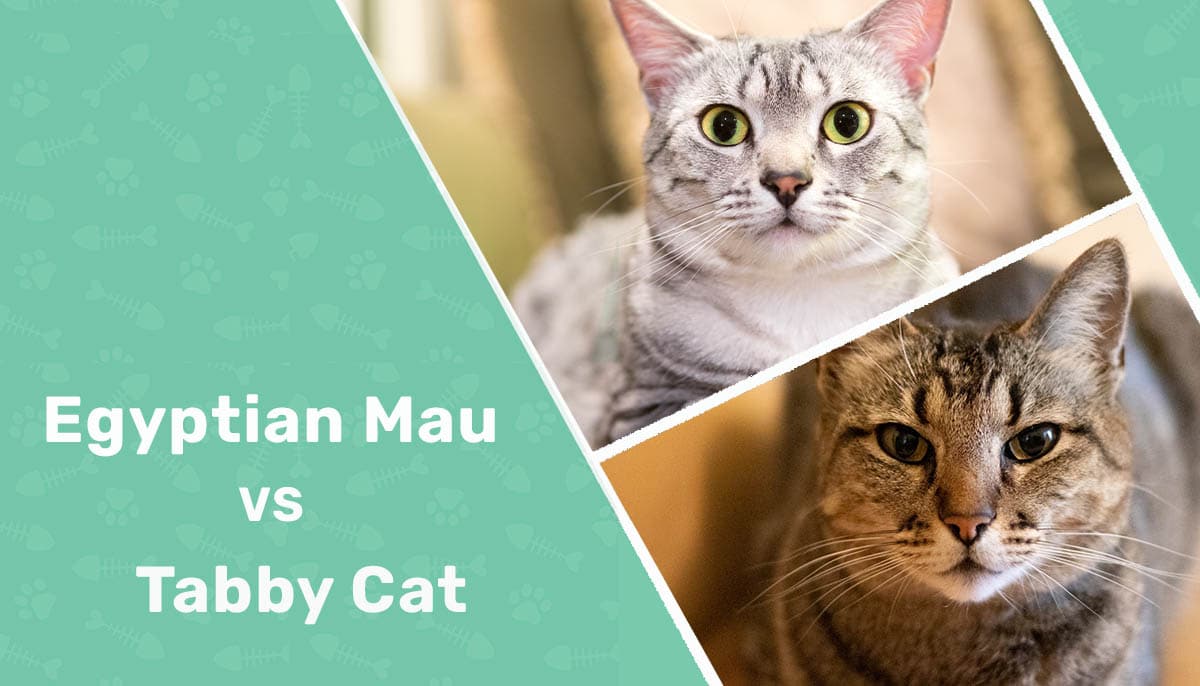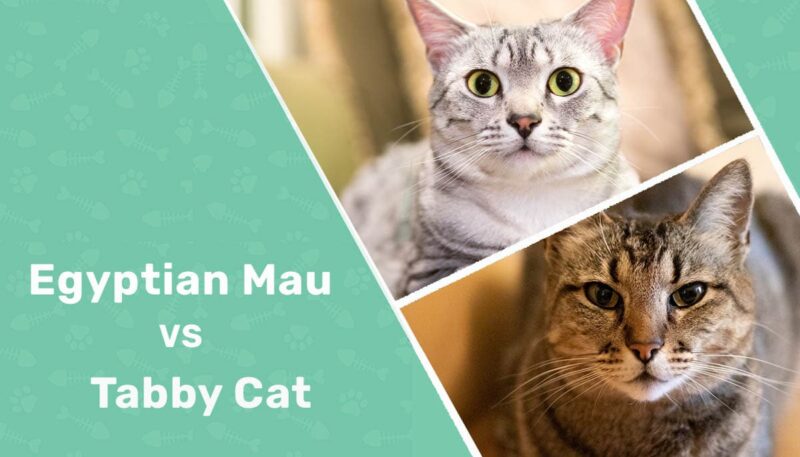Click to Skip Ahead
When choosing a new cat for your home, tabby cats and Egyptian Mau cats make wonderful choices since both are friendly, intelligent, and playful. However, choosing between them can be hard. If you are having trouble deciding, keep reading for a detailed look at both types, including their size, temperament, intelligence, and overall health, so you can determine which is right for you.
Visual Differences
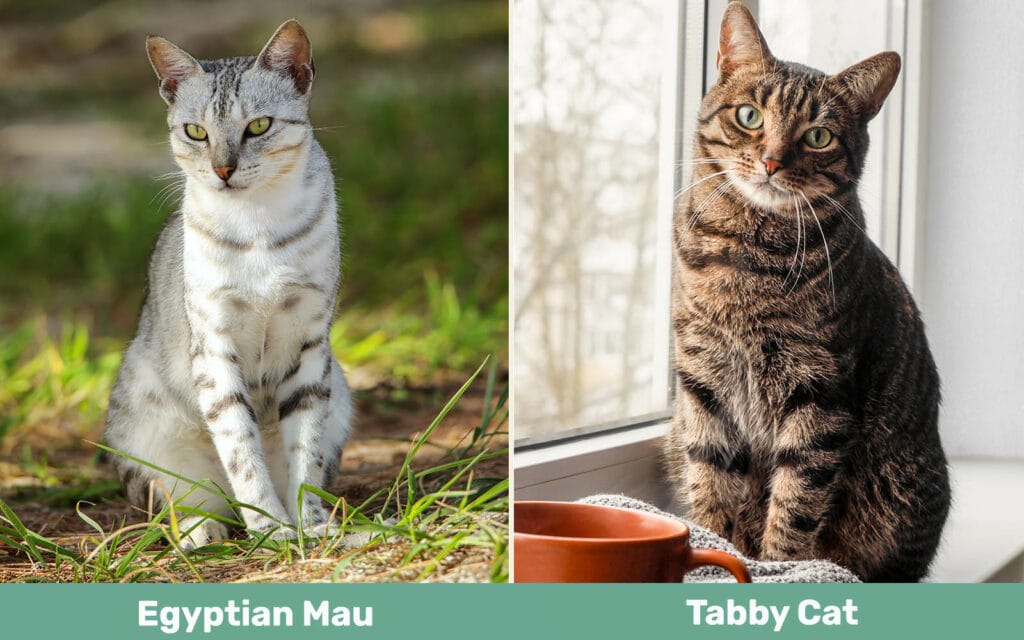
At a Glance
- Average height (adult): 8–10 inches
- Average weight (adult): 6–14 pounds
- Lifespan: 12–16 years
- Exercise: 15–30 minutes a day
- Grooming needs: Easy
- Family-friendly: Yes
- Other pet-friendly: Yes
- Trainability: Intelligent but strong-willed
- Average height (adult): 8–16 inches
- Average weight (adult): 8–25 pounds
- Lifespan: 12–16 years
- Exercise: 15–30 minutes a day
- Grooming needs: Moderate
- Family-friendly: Yes
- Other pet-friendly: Yes
- Trainability: Intelligent but stubborn
Egyptian Mau Overview
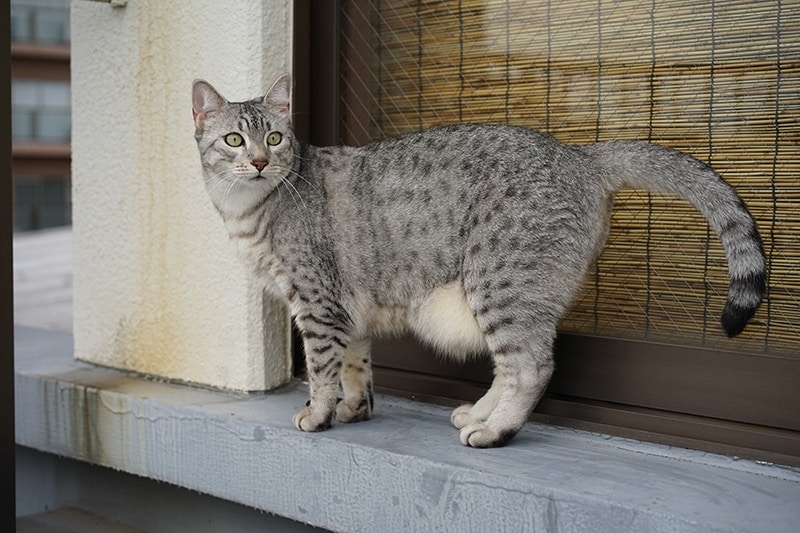
Origin
As the name suggests, the Egyptian Mau originated in Egypt in ancient times, and they resemble many of the cats shown in depictions and hieroglyphics from the time. Breeders gradually developed them from wildcats, and they first came to the United States in the 1950s and the United Kingdom in the 1960s. The International Cat Association and the Cat Fanciers’ Association accept them as a standalone breed.
Appearance
The Egyptian Mau has a short, sleek coat covered with distinctive spots that can vary in size and shape. They appear across the body, even on the belly and inside the ears. The cat’s coat can come in many colors, though silver and bronze are the most common.
They also have mascara markings on their face, which are dark lines that run down their cheeks and resemble ancient Egyptians’ makeup. The Mau’s eyes are usually green, and they hold their medium-length tail high above their back.
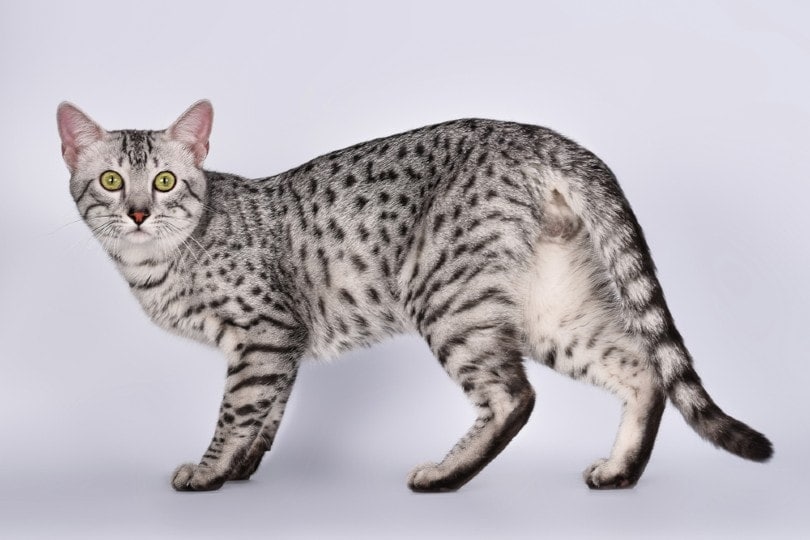
Suitable For:
The Egyptian Mau is a versatile and adaptable breed suitable for various living situations and households. They get along well with children who aren’t too rough, and their playful nature makes them great companions for large and small families.
This cat is well-suited for indoor living, and their short coat is easy to groom and maintain. The Egyptian Mau’s unique appearance helps them stand out in any crowd, and they are a great conversation starter.
Tabby Overview
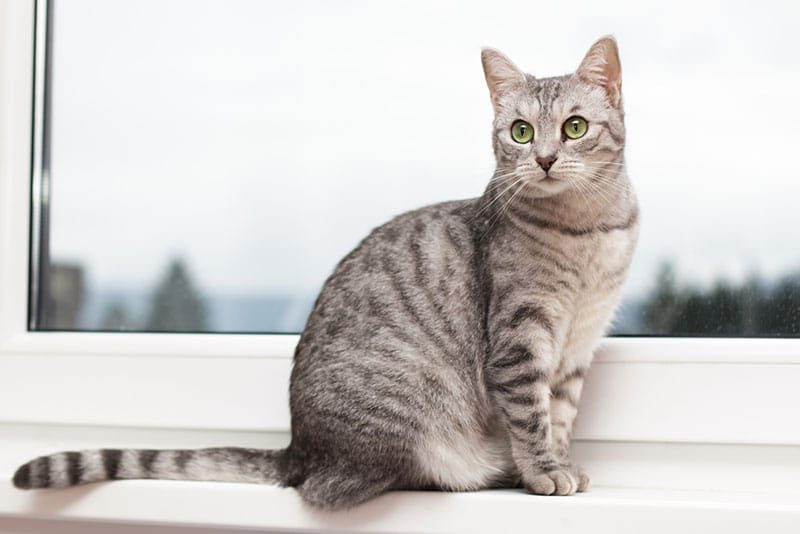
Origin
Unlike the Egyptian Mau, a unique breed accepted by cat associations, tabby refers to the type of coat several breeds can display. Tabby is a distinctive coat pattern characterized by dark stripes, spots, or swirls on a background of a lighter color. The origin of the tabby coat pattern is not linked to a specific breed, and it is one of the most common and ancient coat patterns found in domestic cats worldwide.
It’s a natural occurrence caused by genetic factors. The specific genes that determine the tabby pattern interact with other genes to produce variations, including classic tabby (stripes), mackerel tabby (narrow stripes), spotted tabby (spots), and more. In fact, the Egyptian Mau coat is an example of a spotted tabby coat. Most people refer to any striped domestic cat as a tabby.
Appearance
Since the tabby designation refers to the type of coat, not the cat breed, their appearance can vary dramatically from one cat to another. The pattern can come in various colors, from charcoal black to almost white, and long and short hair cats can have it. You will often see the pattern in many breeds, from the giant Maine Coon to the tiny Munchkin.
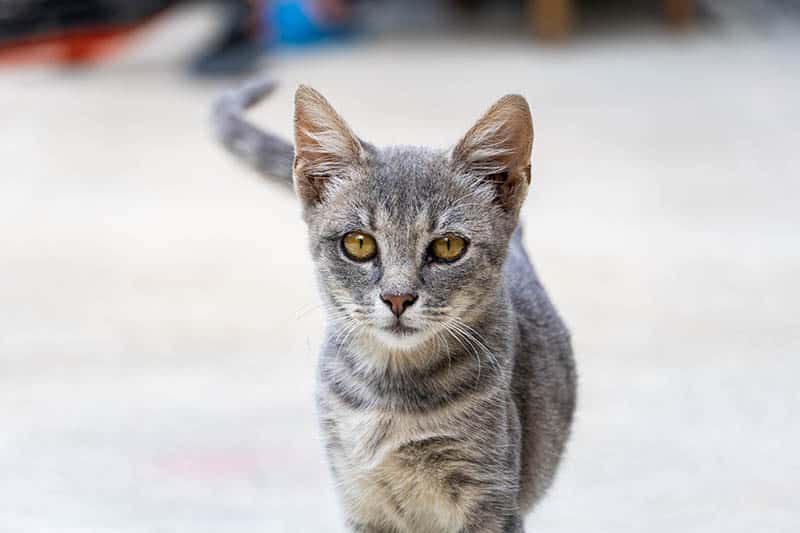
Suitable For:
Tabby cats are suitable for everyone. Since the pattern is available in many breeds, you can likely find one that suits your lifestyle and needs. Ordinary domestic shorthair cats, whom many call tabby cats, are also quite friendly and make great companions. Domestic cats are less expensive than purebred cats, and you don’t need to look for a breeder because you can find them in shelters.
Which Breed Is Right for You?
The Egyptian Mau can make a wonderful pet for large and small families, and their short coat is easy to maintain. This friendly cat gets along with children and other pets with proper socialization, and they have a unique appearance that can help them stand out in a crowd. However, since they are purebred cats, you will need to find a breeder, and they can be much more expensive than a tabby.
A tabby cat has dark stripes or spots on a lighter body. It’s a typical pattern across many breeds, including the Egyptian Mau. However, many people use the term for any striped domestic shorthair cat. They are easy to find and inexpensive and make wonderful pets. Therefore, the decision will likely come down to how much time and money you want to spend unless you have a special affinity for a specific look or breed.
Featured Image Credit: (T) Sarah Fields Photography, Shutterstock | (B) Davex Video, Unsplash

